Six years after her last Building interview, UK managing director talks about Turner & Townsend’s remarkable growth, its game-changing partnership with CBRE and what the future holds
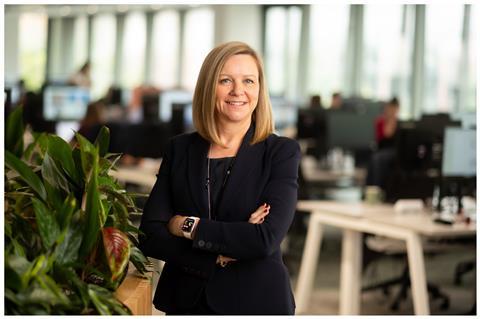
What difference does six years make? Last time Building interviewed Patricia Moore, at the start of 2019, she had just taken on the UK managing director role at Turner & Townsend. Back then, as the country navigated Brexit uncertainty, the UK business had a £250m-turnover and nearly 3,000 UK staff. For her part, Moore appeared unfazed by market challenges at the time and showed full confidence in T&T’s ability to win big strategic projects and invest in rapidly changing digital technology.
Fast forward to now and arguably the political and economic situation in the UK and globally has become even more unpredictable, with conflicts in Ukraine and the Middle East disrupting energy supplies and trade, high inflation and interest rates, US tariffs, and a UK Labour government that has raised taxes on businesses and is struggling to deliver on economic growth.
The backdrop may be unstable, but T&T’s fortunes have been impressively solid. It has been on a turbocharged growth trajectory: across all international regions the latest figures show the group’s income was £1.5bn with pre-tax profit of £200m for the year to April 2024, while the UK’s income was £591m on £86m pre-tax profit (for the year to April 2025) and staff numbers exceeded 6,000. Moore’s confidence looks to have been well founded.
The watershed moment was 2021 when T&T formed a strategic partnership in a game-changing deal worth £960m that involved global giant CBRE taking a 60% stake in the business. Then, in June 2024, CBRE said it would combine its project management business with T&T to hold 70%. That deal completed in January this year, creating a single, enlarged global project management consultancy.
And less than two years after the initial CBRE deal, T&T hit the acquisition headlines again, scooping up the once proudly independent London cost consultant Alinea, in a deal rumoured to be worth £25m-£35m.
So where does a company go once it has achieved such impressively rapid growth? Can it maintain that momentum? And on a personal level, how has Moore adapted to this period of unprecedented change, and what does the future hold?
Growth as the default
Speaking to Moore you get the impression that she – as part the senior team at T&T – has been relentlessly focused on growing the business for so long that it is now her default mode. One of the first statements she makes is that T&T has a track record of typically “doubling the size [over] five year cycles” and that CBRE, understandably, wants them to keep doing that.
It is not just about size though. She says the real vision behind the CBRE partnership is to be “undisputed program manager of choice in real estate, infrastructure, energy and natural resources globally”. That, she believes, is achievable because CBRE and T&T bring different things to the table. CBRE is strong at either end of the real estate market, namely asset acquisitions, operations and disposal, while T&T is good at the “middle bit”, essentially the project and programme delivery.
We just couldn’t go fast enough for the change in landscape that was hitting us and that was why we were interested in CBRE
Another important aspect of the deal for Moore is that the hundred or so partners – who received payouts in the millions on its completion and retain a 30% stake – still have autonomy in how they run the business. T&T reports back to CBRE in terms of results but she says: “The executive committee of Turner & Townsend administers and runs the business, and that was something that was very dear to us.”
She adds: “We’ve got the best of both worlds. We’ve got the ability to be masters of our own destiny but with a big strategic investor behind us that wants to go faster and understands our market.”
The attractive pull factors leading to the deal are clear to see, but Moore is also interesting on some of the push factors that weighed on the T&T leadership team before 2021. Looking back she pinpoints the post-covid era as the moment when new business vulnerabilities hit the sector hard. Added to that, programmes of work were increasing in scale and complexity and it was clear that to win that work players were going to have to get bigger too.
“The whole game was just changing and that was without us going through the increasing cost of compliance in order to win public sector work,” she says. “Business was just getting tougher and more demanding, we were all conscious that we had to digitise the business and we had to green the business.”
To push for growth the partners realised they needed access to capital because without it “we just couldn’t go fast enough for the change in landscape that was hitting us and that was why we were interested in CBRE”.
>> Also read: Leading with confidence: Patricia Moore’s story
Global reach
The real opportunity with the CBRE deal for T&T has been to accelerate its presence in global regions. T&T is no stranger to working internationally, but the growth has largely been organic with the business identifying key senior managers to send to different parts of the world.
“We’ve been in the Americas for a number of years but we’ve got, overnight, a new massive footprint there through the [integration of the CBRE project management business],” says Moore.
Two other big growth markets are Asia Pacific and the Middle East, the latter she says is growing very quickly and without the CBRE project management capabilities.
In terms of revenue split, out of the £1.5bn the business generated globally last year 33% came from work in the UK. Rapidly catching up the UK – and expected to overtake it this year – is the Americas at 32%, then Europe and Australia/New Zealand each at 11% and the rest from the Middle East, Asia and Africa.
Prospects in the UK
Global success is one thing, but as the UK boss she is primarily focused on the domestic market, which because of its Darlington origins 79 years ago, is still the “orientation of the business”, according to Moore.
Our interview takes place during the week of the Labour Party conference, and Moore is unconvinced that Starmer’s administration understands construction’s role in stimulating the economy. In reference to the rise of Reform UK, she says: “If you look at the lessons of history, this sort of level of political fragmentation happens in desperate economic times. It never happens in times of growth […] If you fix the growth in the economy, you get a lot of other things for free.”
There’s a wall of capital that wants to invest, it just needs brokerage
As well as government being construction’s biggest client, she wants it to play an active role in brokering private money for key sectors such as clean energy because “we know that the big investments can’t be financed from the public purse”. T&T picks up a lot of public sector work through frameworks and big programmes such as prisons and the New Hospital Programme. She agrees with the findings in Building’s recent report, Funding the Future: How Private Finance Can Rebuild the UK, that the government needs to be more ambitious with the scope of public private partnerships, saying: “There’s a wall of capital that wants to invest, it just needs brokerage.”
In terms of T&T’s UK business half the revenue is in the real estate division with the other half split between three other divisions: energy and natural resources, infrastructure and defence.
She is upbeat about prospects for the coming year because of the diversity of sectors T&T operates in, saying “we’re across everything”. And while she does not want to reveal details of current big-ticket public sector bids, her confidence is founded on the knowledge that “we’ve become very skilled at the winning of the work”. The firm is on over a hundred frameworks and she says the last six months have been the most successful period of “opportunity conversion” across the divisions.
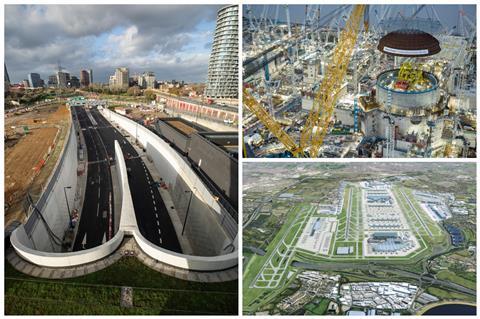
Overall she has a punchy assessment of where T&T sits in the market: “In the UK, we’re number one in real estate. We’re number one in infrastructure. We’re still fighting to get to number one in that energy and natural resources space.”
Within the real estate division T&T made three significant appointments over the summer to bolster its newly combined project management consultancy. Now leading the division is Mike O’Donnell, having worked on projects such as the 2012 Olympic stadium during a 14 year stint at Sir Robert McAlpine, which he more recently rejoined for just over a year as managing director of its commercial business. His arrival at T&T coincided with that of Al Fernie and Jason Smith, both experienced in delivering complex construction projects.
Timeline: T&T and CBRE partnership
July 2021: CBRE announces it will acquire a 60% ownership interest in Turner & Townsend in a deal worth £960m.
January 2023: T&T accounts show partners are paid a total of £18.9m in bonuses. The figure includes a retention bonus to be handed out by October 2024 to prevent an exodus of staff.
June 2024: CBRE announces plans to combine its standalone project management business with T&T, with CBRE owning 70% of the combined business and Turner & Townsend partners holding 30%.
January 2025: CBRE completes the combination of its project management business with T&T. Vincent Clancy (T&T CEO) joined CBRE’s board as part of the completed transaction.
Early 2025 onwards: T&T and CBRE continue integrating people and service lines - positioning the combined business as a global leader in programme/project/cost management.
Moore says these hires are part of a conscious move to bring in people with a “pure construction background” as T&T seeks to be “an integrator helping clients take more direct management in the works”. In the wake of ISG’s collapse, she says it was clear there was a customer need to help manage a fragmented supply chain, and therefore another opportunity to step in.
She identifies infrastructure as a big growth area for T&T, its aviation work is ramping up with the Gatwick scheme “back on the table”, and its ongoing involvement with Heathrow, Stansted and Manchester airports. However, rail, which used to be its single biggest sector, is “problematic”, largely because of funding and structural changes at Network Rail which has resulted in less work.
Moore is particularly bullish about defence work with revenue hitting about £120m a year from a “standing start” eight years ago. For a number of years the Ministry of Defence (MoD) has been a significant client, and in 2024 T&T was reappointed as joint programme delivery partner. A key part of this role will be delivering the next generation of nuclear submarines under the AUKUS pact between Australia, the UK and the US. It is also working on infrastructure upgrades at UK naval bases for the Defence Infrastructure Organisation (DIO) and the Navy. A discrete team delivers on much of the defence work but other parts of the business service these contracts too, and increased MoD spending means T&T will continue to scale up these capabilities.
London office sector
Performance in the London commercial offices sector has been much more subdued. T&T’s acquisition of Alinea made waves in 2023 perhaps because not many onlookers saw it coming. But for Moore the move was an obvious one for T&T, intended to strengthen its access to this “elusive” market, being so heavily based on relationships.
Moore acknowledges that they have yet to reap the full benefits of the Alinea purchase because “the underlying market hasn’t been strong”. But she is quick to add: “I’m confident that’s going to come […] once the market confidence returns.”
While the slowdown is not welcome, she says it has given them a bit of “headroom” for the integration of what is now T&T Alinea: “We’re really pleased with the progress that we’ve made with the team and getting the team unified and talking as one, thinking as one.”

It also means that T&T Alinea has been “slightly shifting focus” to take on public sector and data centres work. The Alinea leadership now runs T&T’s London cost management, which means that they are across all sectors. It has been “a bit of a learning curve for them to get to know how different those sectors operate” but Moore maintains growth in other sectors was what attracted Alinea to T&T in the first place.
Asked about further consolidation in the UK cost consultancy market, Moore is not convinced the Alinea deal itself acted as a trigger for subsequent acquisitions – the Goldman Sachs move on Mace Consult being the latest.
However, she does believe that the capabilities in the UK mean more takeovers and mergers are likely: “I like to think that that the UK sort of leads the world in terms of the construction industry. We are highly capable, particularly the consultancy supply chain. We have quite a sophisticated market, in terms of the schemes that we do.”
Consolidation trends are cyclical, she says: “We saw a couple of decades ago many of the big programme managers entering the UK market. I think there has been this blending of capabilities and we’ve all sort of raised our game.”
Digital change
One area where T&T is known for upping its game for some time is in the digital sphere. Globally it employs 600 digital specialists, 400 of whom are in the UK.
Almost a decade ago it started developing the Hive digital platform, which now houses all its cost management service applications and includes a client portal. “No longer do we send [clients] reports every month; we give them access into our common data platform and they can interrogate the data and access their full suite of reports. We are benchmarking how their projects are performing against everyone else’s.”
Artificial intelligence is a big focus, and while consultants have openly talked about the “substitution risk” that AI poses, Moore says T&T is focused on finding the competitive advantage “whether it’s in how to upgrade our core services or how to give a better customer experience or develop new services, we’re looking hard at all of those areas”.
Though she cannot name names, Moore says they are working with several key clients to drive the use of AI on projects. T&T has started a discrete service for clients, often asset managers, offering them AI readiness reviews. Moore explains: “We go in and we look at the client’s environment and we tell them how ready or not they are to adopt AI and how they can best implement AI.”
Competitive edge
Finding a competitive advantage seems to be what ultimately drives Moore, and a frequent theme that comes up is seeking to turn challenges into opportunities and always looking to push the business forwards. Her role as managing director has obviously expanded as T&T has grown, but she bats back the suggestion that it must now be more pressured than ever: “I think I’ve always been busy, and it’s always been very varied.”
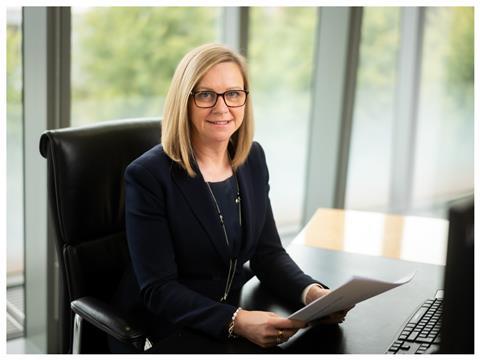
The variety is key, she can be doing everything from reviewing office upgrades or welcoming 300 new graduate recruits, to having daily contact with clients or getting stuck in with bringing in new business: “I think it’s the best job in Turner & Townsend to be the UK MD”.
Moore’s competitiveness is a big part of her personal life too. She is a member of not one but two tennis clubs, and plays for two hours on a Friday, Saturday, Sunday and sometimes a Monday. She won the ladies singles at her club a few years ago and now plays mixed doubles with her 12-year-old son, who from the sounds of it has inherited his mother’s taste for winning.
So to the question that must be on the minds of most people who meet T&T equity partners since their windfall following the CBRE deal: does the money change your perspective on life? “It does and it doesn’t,” she says with a smile. “The biggest perspective that the money gives you is that you can really choose what you do, and you have that inherent base choice.”
We don’t want old partners that have gone past their sell-by date. We’ve always had this deep desire to bring talent into the business
And given the choice, most of the partners have decided to stay she says: “We’ve scaled this business from being a really small player in the London market in particular to being the number one in our market now. We love the journey, I guess. So we want to stay involved.”
That may be so but T&T has a policy that all partners have to withdraw from the partnership at 62, so when asked directly if she is here to stay, Moore laughs and says “for a while, but I’m getting on in years you know”.
At 57 she has a few years yet and seems unconcerned at the prospect of having to reduce her involvement in the firm when the time does come. Clearly a supporter of the strict age cut-off, she says: “We don’t want old partners that have gone past their sell-by date. We’ve always had this deep desire to bring talent into the business, that’s why we have 300 early careers joining our business every year. You can’t have a growing business and not bring talent in.”
It may be a strict policy, but the partnership model has worked for a competitive player such as T&T, resulting in enviable commercial success. It has worked out rather well for Moore too.




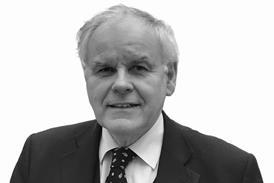
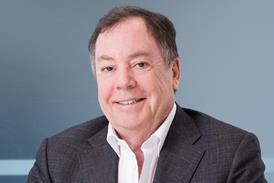













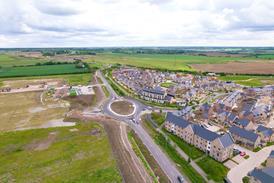







No comments yet